5 free Kontakt libraries for ambient music
[ad_1]
How do you add ambient sounds?
Adding ambient sounds to your music can be as simple as downloading one of these free Kontakt ambient libraries. Some of them need the full version of Kontakt 7, but others run on the Kontakt Player, which is completely free to download. Once you’ve installed these ambient sound libraries, you can use them to create affecting pads, melodies, and more. Just remember the golden rule of ambient: if in doubt, add reverb.
5 free Kontakt libraries for ambient music
1. Vapor Keys Sakura
Named after the famous Japanese cherry blossom, this free ambient sound library gives you three delicate synth patches ideal for pads and melodies.
[ad_2]
Source link
5 must-know bass riffs: how to recreate their sound
[ad_1]
The clean signal was pretty easy to create. We simply added the Bass Pro amp and used the EQ controls to reduce the bass frequencies and boost the mids. For the distorted channel, we used another instance of Bass Pro, but with a distortion effect before the amp. Commerford has used all manner of distortion effects throughout his career. Fortunately, Guitar Rig 7 has over 20 characterful drive and distortion components so it wasn’t hard to find the right one for the task.
In this case the Distortion component did the trick. This models the sound of a well-known distortion pedal that has been used on stages and in studios for decades. This effect on its own wasn’t quite aggressive enough, so we added an EQ before it to further boost the high frequencies. Using the Solid EQ component, we boosted the high-mid (red) band by +12 dB at about 2 kHz to bring out the bass’s attack.
With our clean and distorted signals ready, we used the Crossfade control in the Split Mix component to balance the two. The aim was to get an even blend of power from the clean channel and aggression from the distorted channel. We found about 60% distorted and 40% clean did the trick. Finally, some compression from Solid Dynamics at the end of the chain helped even out the sound.
[ad_2]
Source link
Top five amp sim EQ tricks to sculpt your tone
[ad_1]
5. Adding width with mid/side EQ
Traditional amping has plenty to offer when it comes to stereo processing. Guitarists who are serious about stereo simply get two stacks. But what about mid/side processing? Guitar Rig allows us to quickly apply mid/side EQing to our guitar tone, unlocking powerful mixing tricks that are typically the domain of studio nerds.
What exactly are the “mid” and “side” parts of a signal? The mid band contains all the parts of the sound that are the same in both the left and right channels of a stereo signal. The side band, meanwhile, contains all the sounds that differ between left and right. Guitars tend to be in mono, meaning they’re all “mid.” But effects such as chorus, phase, and delay – so long as they are stereo effects – can add juicy “side” content to the sound.
We experience this additional content as “width.” By processing the side band with simple EQing, we can enhance this feeling of width, emphasize the effects used, and create a glossy, immersive guitar sound. This trick works particularly well with heavily processed guitar parts that are intended to feel dreamy and expansive.
The key to unlocking mid/side processing in Guitar Rig 7 is the Split M/S component. Apply this component to your signal chain and then drop Solid EQ into the “side” band.
[ad_2]
Source link
5 tips for working with hip hop vocal samples
[ad_1]
By chopping and sequencing vocal samples to create new riffs, you can add a lot of sonic interest to any beat, whether you’re producing instrumental hip hop or a backing track for a vocalist to topline over. I wrote a whole article on how to create vocal chops but, for this piece, we’re going to look at how easy it is to make a new vocal chop phrase using Glaze 2.
One of my favorite features of Glaze 2 is that it includes several “Riff & Run” presets which make those chopped ’n’ screwed vocal phrases super simple to make. For this demo, I loaded up a preset called “Boy Please” and then used my Komplete Kontrol S49 to trigger the various hip hop vocal samples included in the preset. This is what I came up with, overtop the original beat:
[ad_2]
Source link
Kick drum EQ essentials: how to create punch and presence
[ad_1]
What is the ideal EQ for a kick drum?
The ideal kick drum EQ settings depend on what your kick sounds like and the kind of track you’re working on. But there are a few basic steps you can follow to EQ kick drums in a consistent, methodical way. Most kick drums are made up of a few discrete frequency areas. By paying attention to each of these areas in turn, you can make sensitive EQ decisions that will improve how your kick sounds – whether you’re working on a pounding club track or delicate sound design.
Start with the lowest frequencies. Kick drums tend to have a loud “boomy” element in the 40–100 Hz range. This is what gives the kick its power. If your kick has unwanted sub bass frequencies below this point, you can use a high-pass filter to remove them.
Proceed with caution here. The bass frequencies are what make your kick drum sound heavy, and if you cut too much then the kick will lose its power. Start by identifying the fundamental frequency of the kick – its dominant low frequency. You can do this by temporarily applying a narrow Q bell filter with a strong boost and sweeping it around the bass frequencies until you find the loudest one. Once you have identified the fundamental frequency, set your high-pass filter comfortably below this point, so you can be sure you’re not cutting out anything important.
Now for the fundamental frequency itself. Boosting this frequency range with a gentle bell filter will make the kick sound heavier. But make sure it’s balanced with the rest of the track – particularly other low end elements such as the bass. A too-bassy kick will make your track sound muddy and muffled.
Next, look at the low midrange. The zone from around 100–600 Hz is what gives a kick drum its body and character. But too much in the midrange can make the kick sound dull and claustrophobic. Consider a gentle EQ cut in this zone to improve the clarity of your kick. Live-sounding “rock” kicks often benefit from a cut at around 300 Hz to reduce boxiness.
Finally, the upper midrange. Most kicks have a clicky “attack” in this range, somewhere around 1–4 kHz. Boosting with EQ can make your kick sound clearer and more punchy. Or, if your kick is too sharp, cut this range to soften it.
Not every kick drum will require EQ in all of these frequency zones. But by paying attention to each zone in turn, you can make methodical EQing decisions and consistently improve your kick drum sound.
[ad_2]
Source link
How to compose music: a beginner’s guide
[ad_1]
In this case, the melody uses notes from the minor scale as the chord changes happen. Sometimes, we can find songs that have melodies that don’t display the minor or major quality of the key that clearly, and that can be quite the opportunity to play with both chord sets and change things underneath.
If you pay attention at the end of a jazz song, many times you’ll hear the pianist play a set of improvised additional chords underneath a long sustained final note of the singer to add a little extra embellishment and drama before the song ends. That takes quite a bit of practice to do smoothly, but basically, what’s happening is that the pianist is listening to the held note and adding chords that might not be from the home key but that still work together with the melody and that way they can create a mini harmonic journey for that final statement.
3. Getting “chromatic”
The idea of chromaticism has to do with the changes in color that we get from moving on half steps; since unavoidable, if we move in contiguous half steps, we’ll be going in and out of our main scale and touching upon all the options in between. If we do that, then we are finding what we call the “chromatic scale.”
Here is an example from my own songwriting to exemplify chromaticism. I was playing with 7th chords. A 7th chord is a triad with one more third stacked on top.
If we take our C major triad, in order for it to become a “C major7,” we add the note B, which is a major third above the fifth, and the chord will be spelled C-E-G-B.
I was not in the key of C at that time. I wasn’t really thinking of any key in particular. I was just moving 7th chords up and down the fret and reacting to how they felt next to each other. I was alternating major 7th chords with minor 7th chords. I remember starting on a Gb Maj7 and then going down a half step to F minor7.
Then I took that and made it into a sequence, going up a whole step and repeating the motion starting from Abmaj7 down to Gm7. Finally, since that was feeling good, and we love balance and things that are full circle, I went back to the beginning and played the Gb Maj7 to Fm7 again. At that point, the final landing Eb chord was an absolute necessity.
In this case, the song is clearly in Eb Major. The only chord that doesn’t belong to the Eb major scale is the Gbmaj7, which is borrowed from the Eb minor scale.
Chromaticism isn’t quite happening in this situation since there is a whole step between F and Eb, which takes us back to Eb major, but it’s pretty close! And the fact that the progression departs from a Gb to F in a chromatic step makes the whole progression feel a little more colorful than it actually is.
Here are the chords of the intro and verse, which follow the same structure:
[ad_2]
Source link
5 tips to get the most from your drum sequencer plugins
[ad_1]
Battalion lets you adjust the depth of randomization applied by adjusting the Depth parameter in the settings menu. This feature controls how much randomization is applied to knobs, sliders, etc. when you click the plugin’s Dice buttons. Larger Depth values lead to more extreme changes.
To prevent parameter values from drifting over time, as you continuously click a Dice button, you can enable Drift Prevention in Battalion’s settings. With this feature enabled, parameters will randomize within a certain range, no matter how many times you click a Dice button. For example, a parameter set to 0% using a small Depth value of 5 will never reach 100% when Drift Prevention is toggled on.
[ad_2]
Source link
What is beatmatching? Understanding the science of syncing beats
[ad_1]
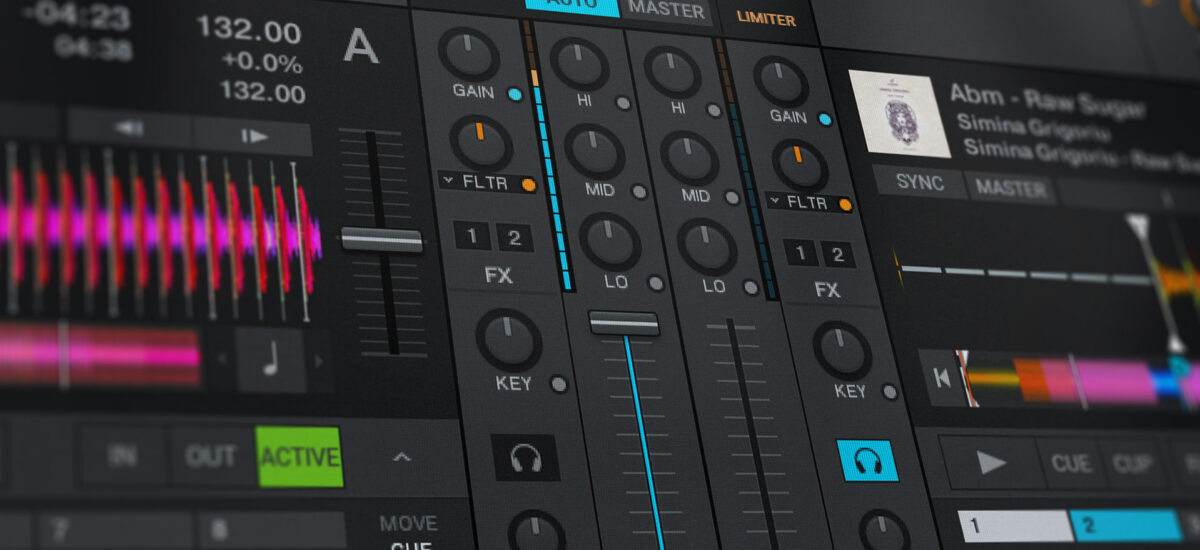
Beatmatching is a necessary skill for the majority of DJ mixes. The goal of beat matching is to synchronize the bpm of two tracks so that they play simultaneously, and it requires the ability to determine which track is faster than the other.
In this guide, you’ll learn what beatmatching is, how to prepare your tracks and equipment to beatmatch, how to beatmatch in Traktor, and how to use Sync in Traktor. When you’re able to successfully beatmatch, you’re on your way to becoming a great DJ.
Jump to these sections:
- What is beatmaching?
- Setting up to beatmatch
- How to use Traktor to beatmatch
- How to use Sync in Traktor for better beatmatching
Follow along with a free trial of Traktor Pro 3, professional DJ software that can help you
What is beatmatching?
Beatmatching is a fundamental skill in DJing where a DJ aligns the tempos of two tracks so they play in sync with each other. This involves adjusting the playback speed of one track, typically via pitch control or tempo sliders on DJ equipment, to match the BPM of the other track.
The goal is to seamlessly transition from one track to another without disrupting the flow of the music.
To learn how to beatmatch, you’ll need to develop good listening skills to hear which track plays at a faster speed, and then make adjustments to the tracks until they match. The tempo of your tracks are measured in bpm, which stands for beats per minute.
Beatmatching is a challenging skill to learn and the best way to master it is to practice. Using Traktor, you can practice beatmatching and make use of the Traktor’s Sync function to match the beats together.
Setting up to beatmatch
Let’s take a look at the steps you need to take to beatmatch.
1. Select percussion-heavy tracks
Select two tracks that are percussion heavy and have intros and outros that are mainly drums. It’s easier to match drum rhythms together than it is to mix dense musical arrangements. Ideally the tracks should be in the same key, or compatible keys.
To learn more harmonic mixing and how to use the key of each track to create better mixes, check out our guide.

2. Use a DJ monitor
Use a DJ monitor. You will need to hear track one (Deck A) playing out of the monitor, while you listen to track two (Deck B) in your headphones.
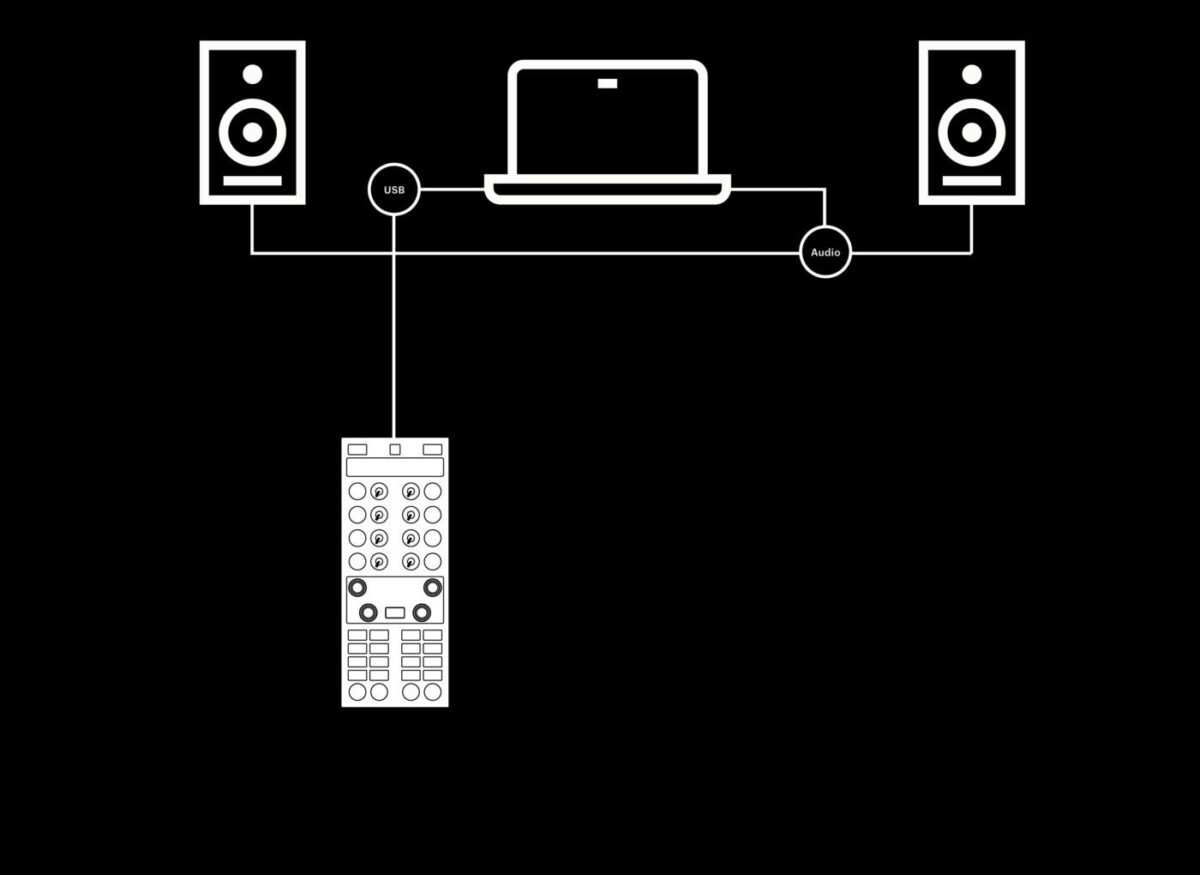
3. Find the beat and set a cue point
Find the first beat (also called the downbeat) of each track. In most cases, this is automatically marked in Traktor. If the first beat is not marked, use Cue 1 to add a cue point. Using a cue point allows you to easily return to the first beat of the track.
Learn more about how to become a DJ and the DJ equipment you’ll need to get started.
How to use Traktor to beatmatch
Let’s take a look at Traktor Pro 3 and Traktor hardware and how they work with beatmatching.
Ensure that Traktor is connected to a DJ monitor. If you’re using Traktor as stand-alone software on your computer, select your audio device in the Preferences/Audio Setup. If you’re using Traktor with a DJ controller, connect the outputs of the DJ controller to your monitors.
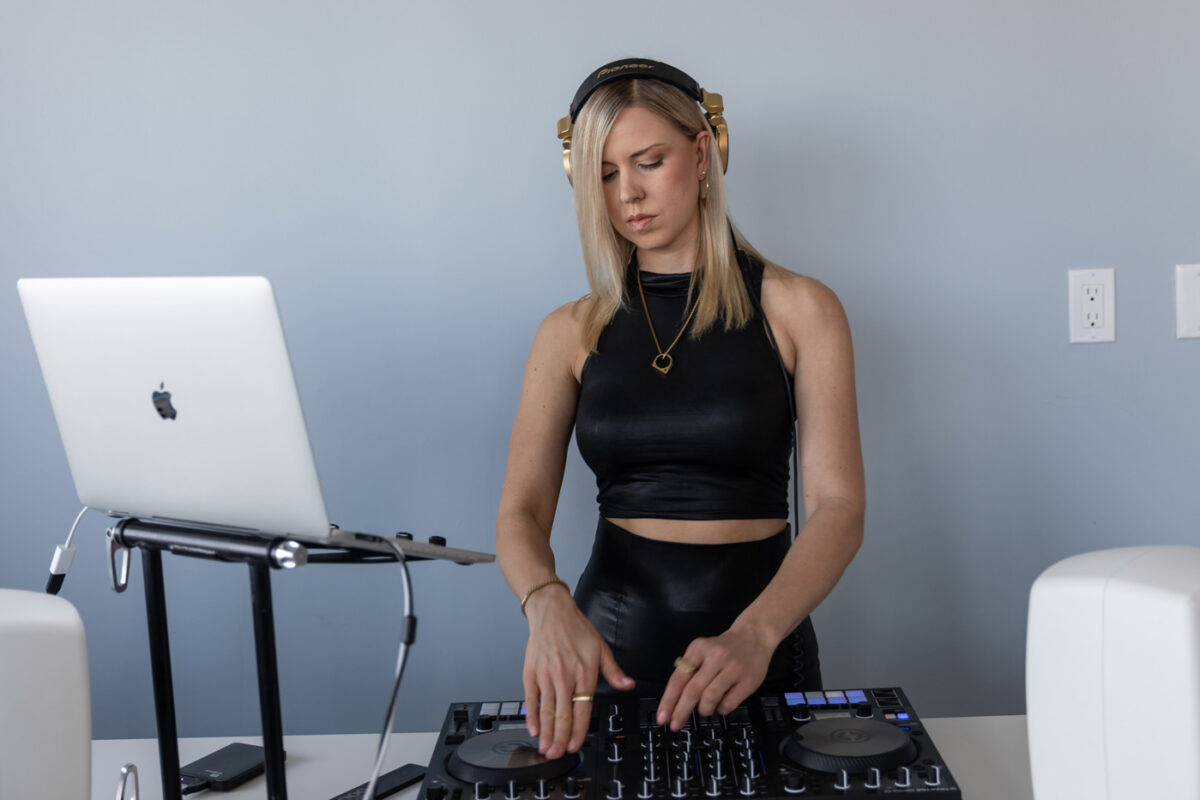
Load up a track on Deck A, and another track in Deck B.
Find the first beat of each track. Traktor will often mark this with an automatic cue point. If it’s not marked, create a cue point on the first beat on both tracks.
Press play on Deck A and bring up the channel fader all the way. Traktor will display the BPM in the upper right hand corner.
Sara Simms – 855 (Simmetry Sounds)
On Deck B, turn down the channel fader and select the headphone cue button. This will allow you to hear the track in your headphones when it’s playing, but it won’t play over your speakers. The BPM of the track is displayed in the upper right hand corner.

If you’re using a DJ controller, try moving the first beat of Deck B back and forth. Press play on the track, or release the track at the beginning of an eight bar sequence. Listen to the BPM of Deck B, and decide if the track needs to be sped up or slowed down to match the BPM of Deck A.
Deck A will be playing in your DJ monitors, while Deck B will be audible only in your headphones. Use the BPM information that’s displayed in Traktor as a guide. Quickly adjust the BPM of Deck B using the Pitch Fader until the BPM of Deck B matches the BPM of Deck A. If the tracks go out of sync (called a ‘train wreck’) simply bring Deck B back to the first beat, and start the mix again.
Once the two tracks are beat matched, you may need to start Deck B again from the beginning so that you can perfect the mix and bring in Deck B at the right time. To do this, simply press the corresponding cue button (eg. Cue 1) in Traktor or use DJ controller buttons to jump to Cue 1. Press Cue Point 1 on Deck B to prepare the track to play from beat one.
When the track in Deck A reaches the part you’d like to mix in on Deck B, press play on Deck B.
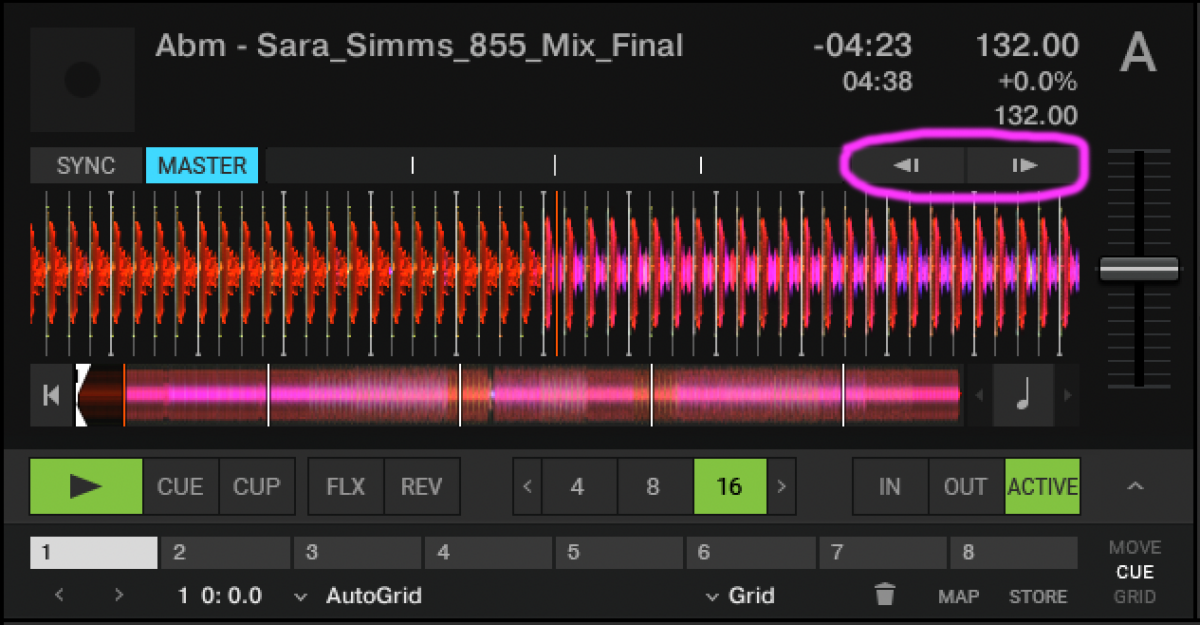
Bring up the channel fader on Deck B. The two tracks should be playing in sync! To make a slight adjustment forward or backward, use the Tempo Bend feature. This feature is the two arrow keys located on the top right hand side of each track and is often mapped to buttons on DJ controllers. Tempo Bend is a useful feature for making slight adjustments to the BPM of the track.
Sara Simms – 855 (Simmetry Sounds) & Simina Grigoriu – Raw Sugar (Kuukou Records)
If the two tracks aren’t playing exactly in sync, repeat the steps above until the BPM’s are matched. Traktor makes this process a lot easier by displaying the BPM.
If you are relying primarily on your ears to beatmatch, you will need to teach yourself how to listen to two different sources at the same time. With one ear, listen to the BPM of Deck A that’s playing on your monitors. Using your headphones, listen to Deck B. When you first begin beat matching, it’s easier to listen to one track or deck at a time in your headphones. When beat matching becomes easier, you can use the Headphone Cue buttons on both decks to listen to both decks simultaneously.
To learn more about DJing with Traktor, refer to our guide.
How to use Sync in Traktor for better beatmatching
Beatmatching can be a challenging skill to master. Luckily, advances in technology have made beatmatching easier.
Traktor’s Sync feature allows DJs to instantly beatmatch. Using Sync in Traktor can allow you to focus on more creative aspects of mixing, such as looping and applying effects.
To use Traktor’s Sync feature, Traktor’s beatgrids must be correctly aligned. The beatgrid is a fine white grid displayed on the track’s waveform. When you analyze a track in Traktor, the program calculates the BPM of your track based on the transients, which are the initial hits of each sound that appear as peaks in the waveform display. Traktor adds a beatgrid to each track.
While Traktor does a good job of automatically aligning the beatgrids, occasionally you may need to make adjustments to beat grids. Learn more about how to beatgrid with Traktor in this helpful guide to ensure your tracks are perfectly in sync.
Once your beatgrids are set, open Traktor’s Preferences and navigate to Transport.
In Sync Mode, select Tempo Sync. Press Play on Deck A and it will automatically be set to Master. This means that when Sync is activated on another Deck, its tempo will be matched to the Master Deck.
On Deck B, press the Sync button in the software or on your DJ controller. When Deck A reaches the point you wish you begin mixing, press play on Deck B. The two tracks will play at exactly the same speed.
Continue to mix the two tracks together, then bring down the channel fader on Deck A to finish the mix.
Weska ft. MC Flipside – Life Lines
Weska ft. MC Flipside – Life Lines (Weska) & Adam James – The Way You Move (Simmetry Sounds)
Start beatmatching in your sets
Now that you’ve learned beatmatching techniques, it’s time to start beatmatching in Traktor in your DJ sets. If you beatmatch tracks together, you can create smooth mixes, radio shows, and perform seamless club sets. Beat matching is one of the first steps to mastering the art of DJing.
While these techniques are fresh in your mind, pick up a copy of Traktor and your favorite Native Instruments DJ controller and start beatmatching in your sets today.
The post What is beatmatching? Understanding the science of syncing beats first appeared on Native Instruments Blog.
[ad_2]
Source link
How to make future house music with cutting-edge production techniques
[ad_1]

If you’re a fan of electronic music, you’ve likely heard of future house. So, what is future house? Future house is a subgenre of house music that rose to prominence in the early 2010s and continues to dominate dance charts today. With its bright synth leads, powerful bass lines, and catchy hooks, this genre provides a playground for producers that is fun and rewarding to work within.
If you’re a producer who wants to make future house but doesn’t know where to start, you’ve come to the right place. In this article, we’ll guide you through the process of creating future house music, from finding inspiration to producing a mastered track that can sound like this:
Jump to these sections:
Follow along with this tutorial using Komplete 14, the leading production suite with 145+ instruments and effects, 100+ Expansions, and over 135,000 sounds.
What is future house music?
While people often lump many subgenres of EDM together, future house has some key elements that distinguish it from other styles of electronic music. These characteristics are what make the genre so uplifting and cutting-edge.
Let’s listen to a few future house tracks.
Here’s “On My Mind” by Don Diablo:
And the more recent “Electric Elephants” Edit by Dastic:
What stands out in these tracks that can help us understand how to make future house music?
- A catchy melody: Future house music incorporates memorable and singable melodies that we can hum back after listening.
- Bass lines: The groovy syncopated bass lines are another mainstay of the genre. Bass often drives these songs and lays a strong foundation for any future house track.
- Synthesizers: One contributing factor to this subgenre’s “futuristic” sound is its extensive use of synthesizers. The synths embody the complex and layered sound design inherent to the genre.
- Four-to-the-floor beats: Like many other subsets of house music, future house tracks almost always feature a four-to-the-floor beat with a kick drum falling on every quarter note.
- Buildups and drops: Future house producers use tension and release extensively in their music. Anticipation builds so that the dynamic drops are laced with impact.
Who started future house music?
No artist single-handedly created future house. But while it is difficult to trace any genre to its exact inception, there are a few musicians in the niche that have been so influential that we could probably attribute its “beginning” and popularization to them. Two names that are practically synonymous with the term “future house” are Oliver Heldens and Tchami.
Heldens broke out in 2013 with “Gecko (Overdrive)” with Becky Hill—a groovy and forward-thinking track that caught the electronic music community’s attention. After his early successes, Heldens established his label, Heldeep Records, in 2015. There Heldens showcased his music alongside that of emerging future house artists on the label.
Tchami is another pioneer of the future house genre. His innovative production techniques, use of vocal sampling, and diverse influences shaped future house into what it is today. Listen to his early work “Promesses” which shot him into stardom:
How to make future house music
Future house today has become quite a broad term and ranges from a more melodic sound to the harder, darker varieties. For this tutorial, we’ll be making something a bit more on the melodic side, but feel free to change up your melodies and sounds for a more intense energy.
With that in mind, let’s make an original future house track. We’re using Battery, and The Gentleman, as well as Wake and Bump for Massive X. We’ll start by making each section and instrument separately, and then combine everything in an arrangement for a final mastered track.
We’re using Ableton Live in this tutorial, but you can follow along with your preferred DAW.
1. Program your drums
We’ll start by setting the tempo to 126 BPM.

As we saw earlier, future house tracks generally have a four-to-the-floor beat that lays the foundation for the track. Let’s make our own. We’re going to use the Arena Kit from Battery’s factory selection.
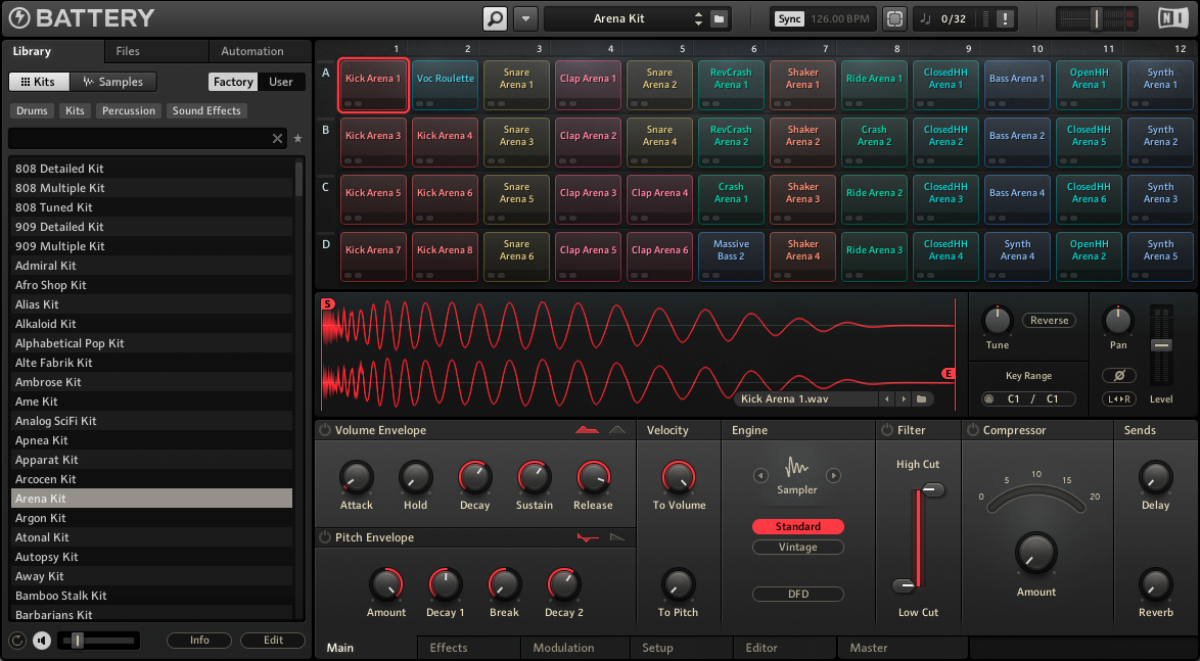
We’ll start by placing a kick on every downbeat. We’re using the kick that’s on C#3.

From there, we’ll grab and layer a snare and clap on beats two and four of every bar.

The last step to creating a basic four-to-the-floor is a hi-hat placed in between every kick.

This beat is the essential starting point for any future house track, but as it stands it lacks groove. Let’s add in some additional percussion to fill in the gaps.

With that, we have the beat that we’ll be using for the drop of the song.
2. Add chords
The Gentleman piano is a classic choice for your chordal instrument, but you can experiment with any of these free alternatives. We’re setting the tonal color like this.
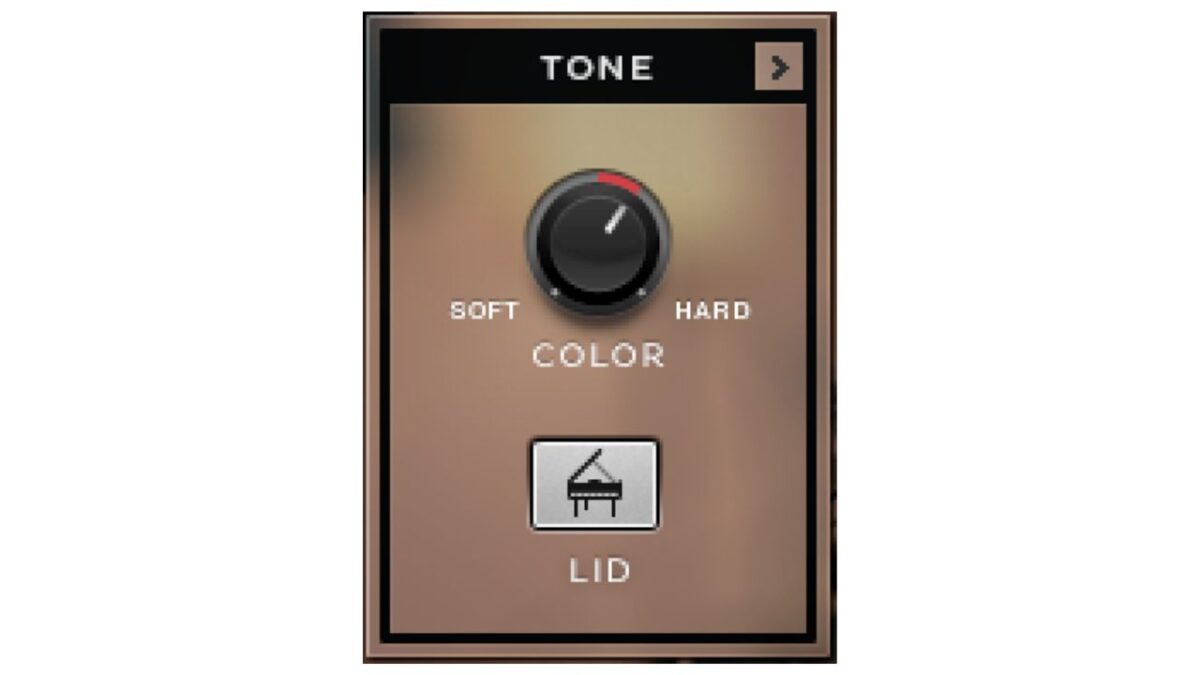
We’re also adding on some Supercharger GT compression and saturation:
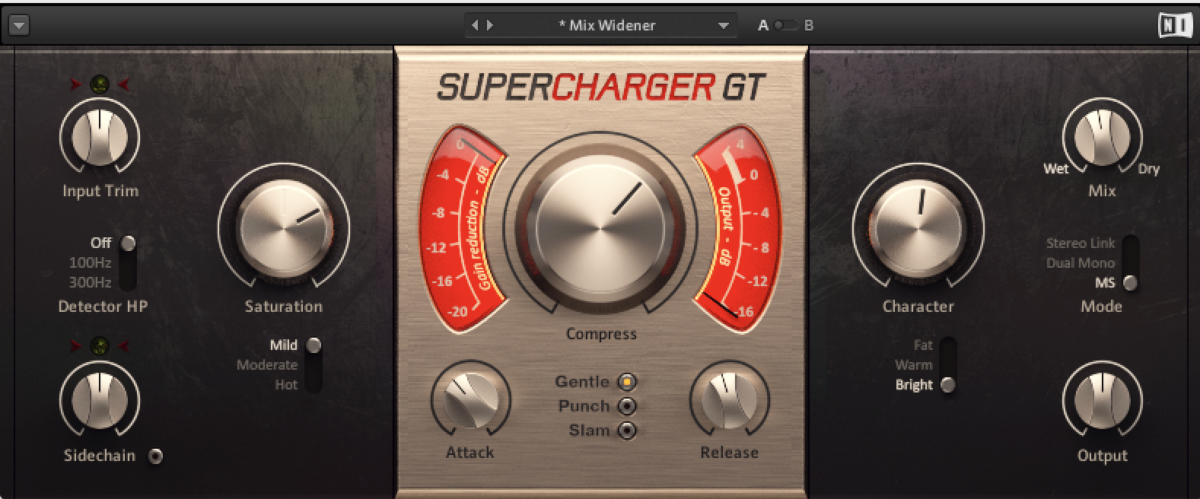
A good chord progression is essential in future house. It’s an emotive genre that uses melodies extensively. So you’ll want to use a chord progression that suits the mood you’re trying to evoke.
We’re going with a i-v-VI-VII in E minor. That means the chords that we’re using are E minor (i), B minor (v), C major (VI), and D major (VII). This ascending progression gives the track a euphoric and uplifting feeling.

Of course, playing the chords in such a static way is boring. Let’s change the rhythm by adding some stabs. We’ll also create anticipation by bringing the chords in before the start of each count. We’ll also remove the bass notes from the chords to leave space in the mix for our bass synth.

Finally, let’s add a Raum reverb to create an epic space to put our piano in.
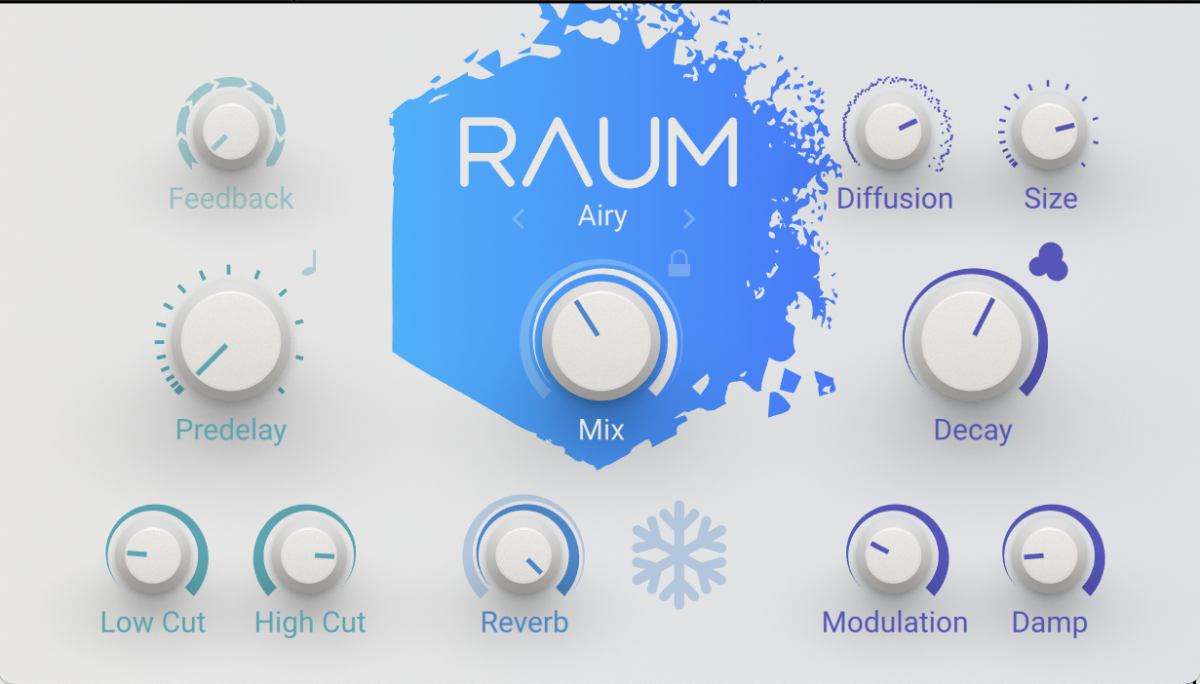
3. Write a bass line
The bass patches we’re focusing on were made in Massive X. We’re layering the top end of the “Building Block” preset from Bump:
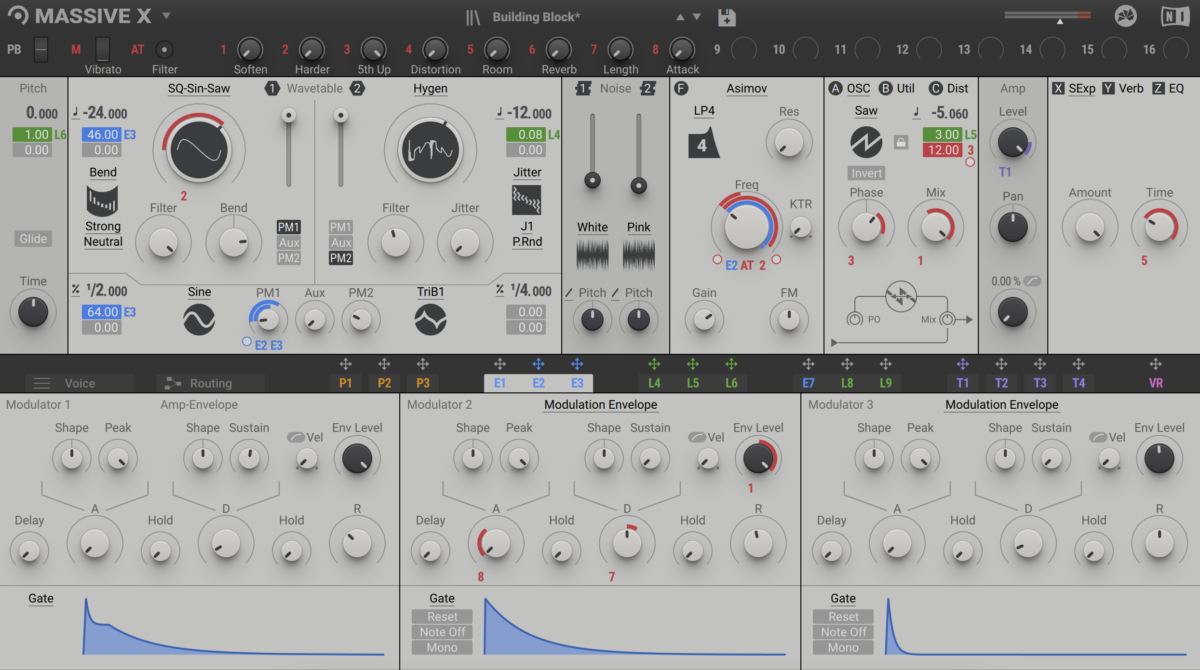
With a simple sub bass patch for low-end fatness. Group these two tracks together. Then make sure to EQ out the sub-frequencies from “Building Block”. That will prevent us from overloading the sub-frequencies.
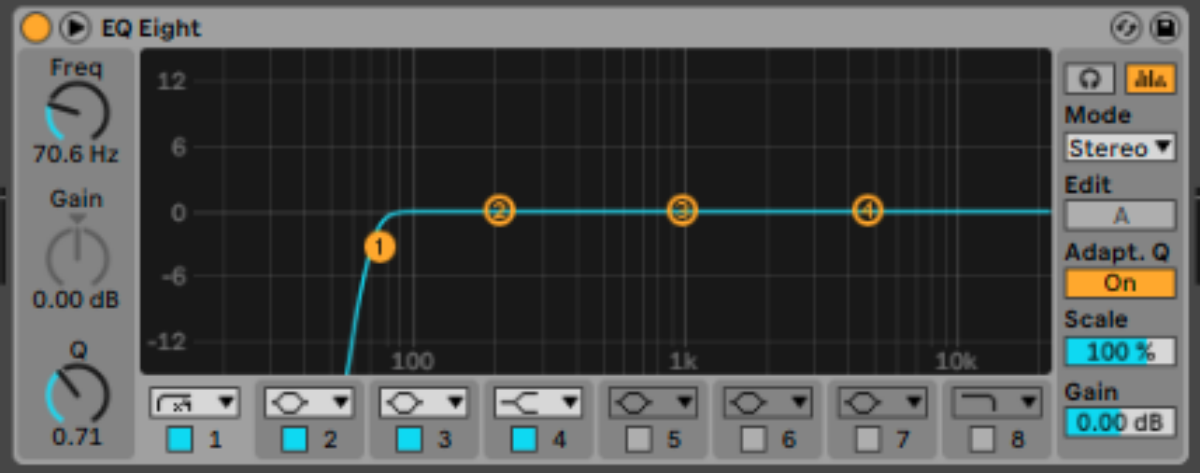
With our chord progression in mind, we know which notes to highlight in our bass line – E, B, C, and D. We’ll play them in sparsely and double up the bass notes with octaves to create a spacious, bouncy and hard-hitting feeling.

4. Create a synth lead
Future house is full of metallic-sounding synthesizers, so for our synth lead we’re using the “Stargator” preset from the Wake expansion with a few edited settings like the “Gate” macro and the main envelope.
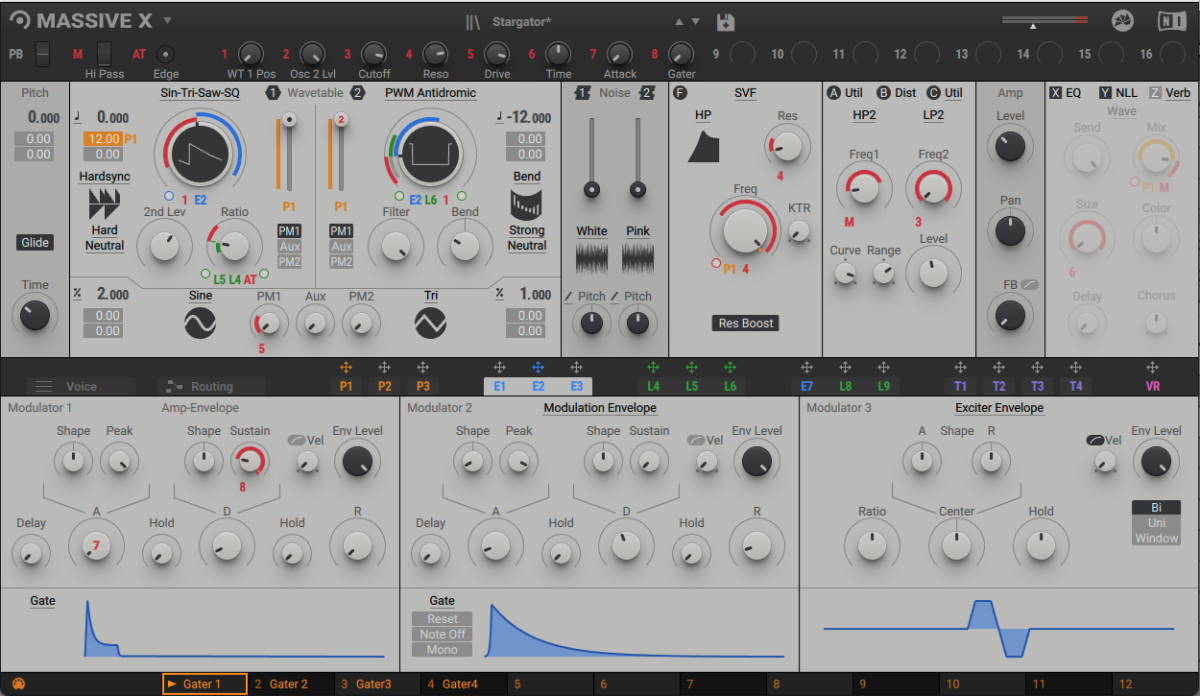
Let’s add some space by sending it to another instance of Raum on the “Basic Synth Hall” preset.
We’ll also add an Auto Filter onto the track (if you’re on another DAW you can use a low-pass filter on any EQ). We’re not doing anything with it just yet, but you’ll need it later for the arrangement section.
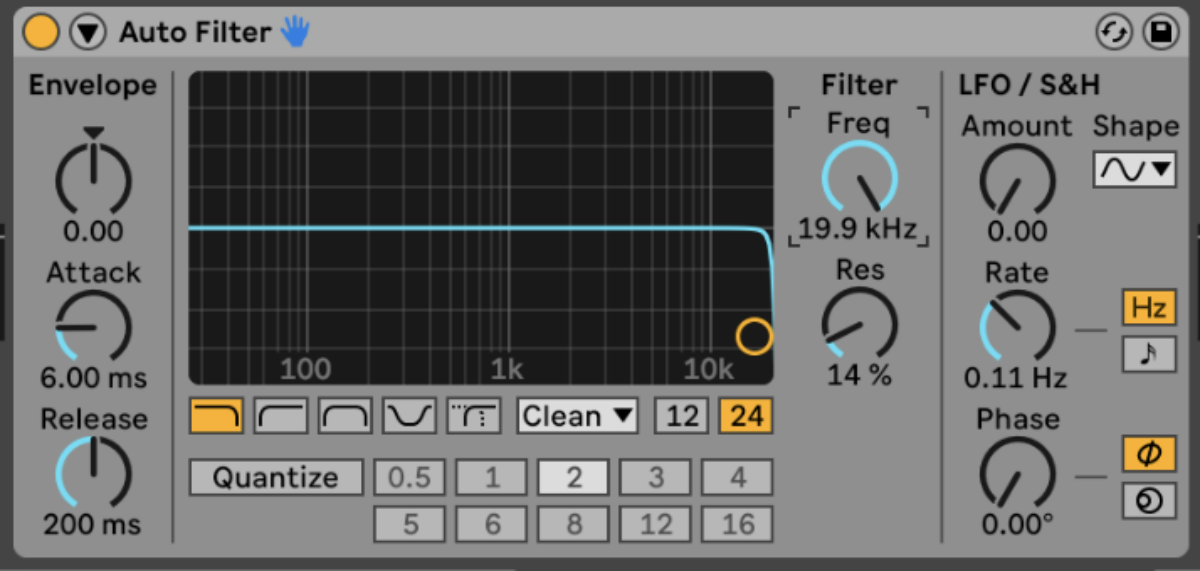
5. Sidechain to your kick
Sidechaining allows us to use particular sounds as triggers to lower the volume of other sounds while the trigger sound is playing.
To let our kick cut through the mix, we’ll need to sidechain certain elements of the song using the kick as a trigger.
In order to do that, we’ll need to send our kick to a separate audio channel outside of Battery. Simply right-click on the kick in Battery and send it to direct out 3/4.
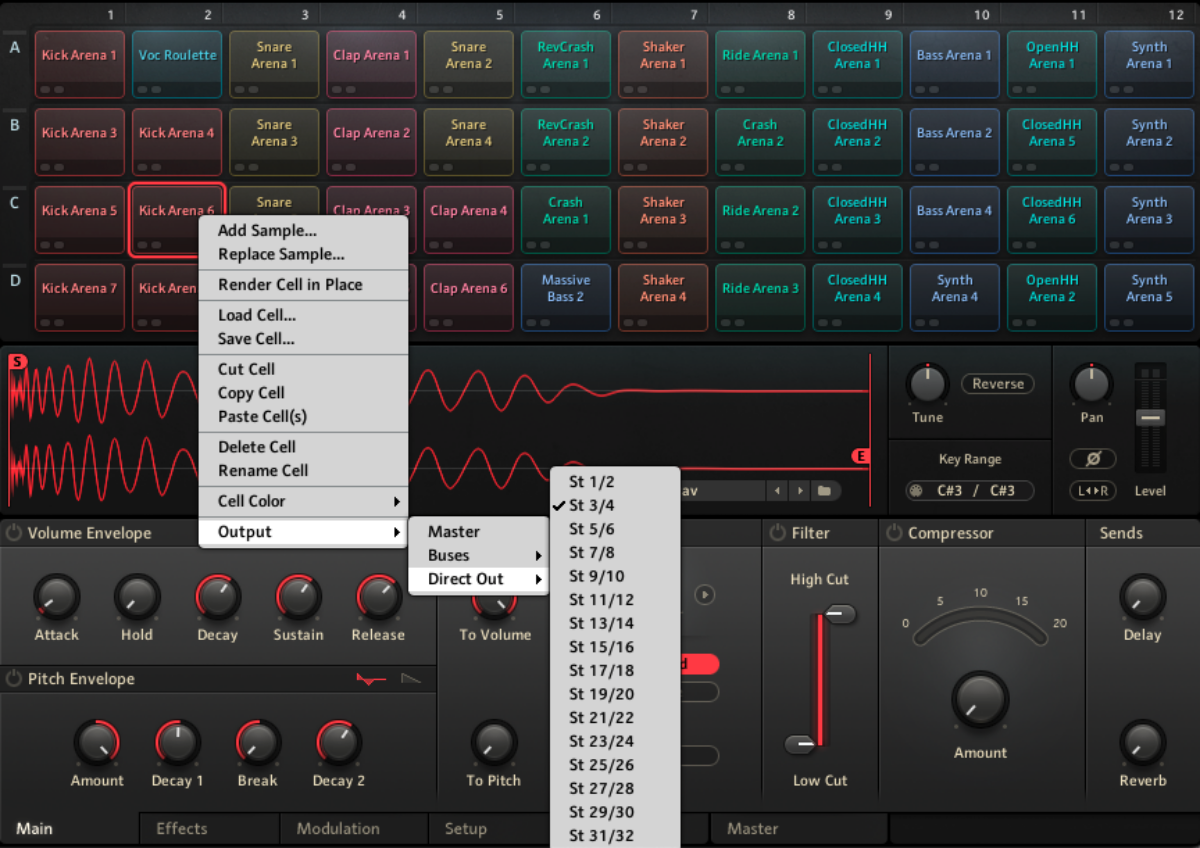
Now create an audio channel that receives audio from Battery’s 3/4 output channels.
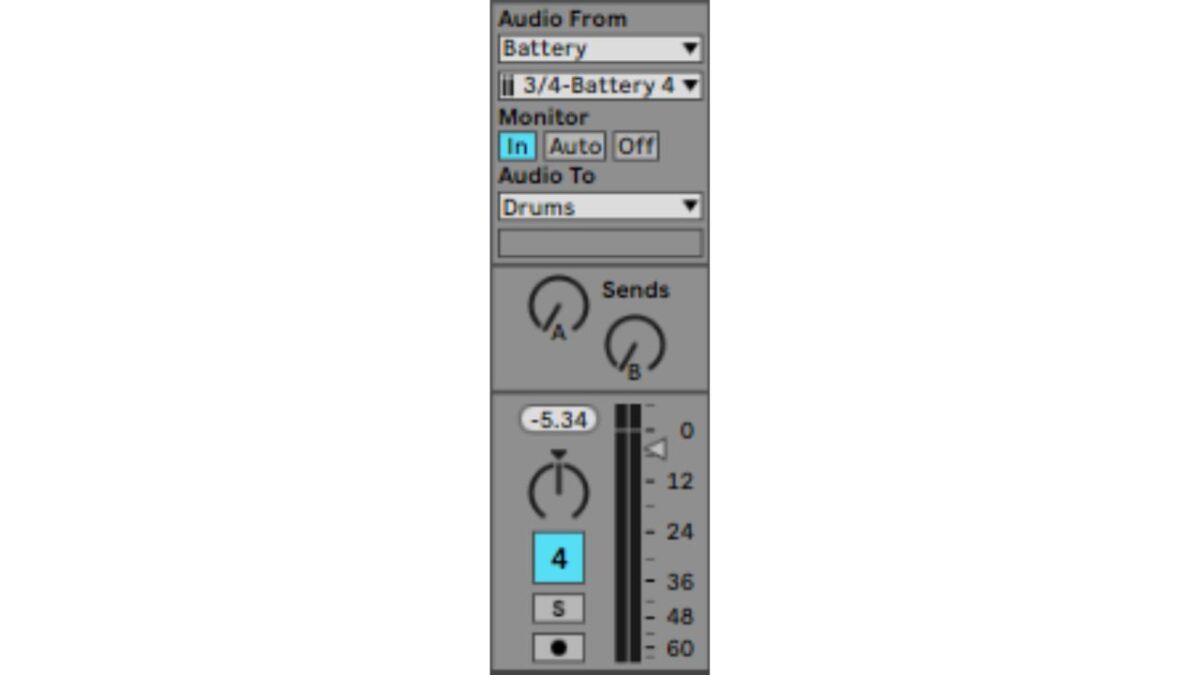
With that done, we can set up sidechain compressors that react to the kick’s signal, causing elements to “duck out” of the way and give room to the kick’s punchiness. Here are the sidechain compression settings so you can dial them in yourself:
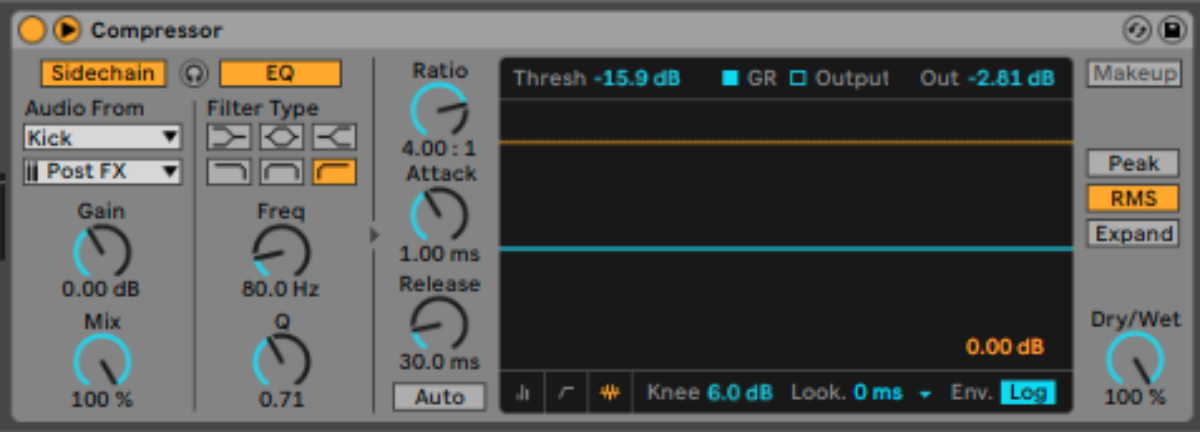
Add the compressor onto any channel that is taking up a lot of space in the mix. In this case, that’s the bass and lead.
Let’s see what sidechaining is doing to our mix by comparing the piano sound without sidechaining to our piano with sidechaining.
Can you hear how the piano is “ducking out” of the way when the kick is playing?
6. Arrange your track
You’ve got all the ingredients for this track, so it’s time to get creative with the arrangement. We’ve decided to add piano into the intro section of the song and layer it with sub-bass playing legato bass notes, and a clap every second and fourth beat.
After that, we’re bringing in the melody subtly by automating the cutoff frequency with an auto filter, while increasing the intensity and timing of the snare. Remember if you’re working on another DAW, you can simply use a low-pass filter on an EQ here.


A repeating snare can start to sound very stiff, so don’t forget to adjust the velocity for each hit in this build-up.
Let’s add a bit more tension by inserting a noise swell in Massive X that will cut out just before the drop. The preset is called “Super Swell.”
The build-up will lead straight into the drop which will feature all the elements we composed earlier, except for the piano. We’ve removed the piano here to give the synths breathing room in the mix.
We’ve also added in one-shots from Battery in a few spots. Here is a screenshot of the full arrangement, but we encourage you to get creative here and chop up the elements we’ve created in different ways:
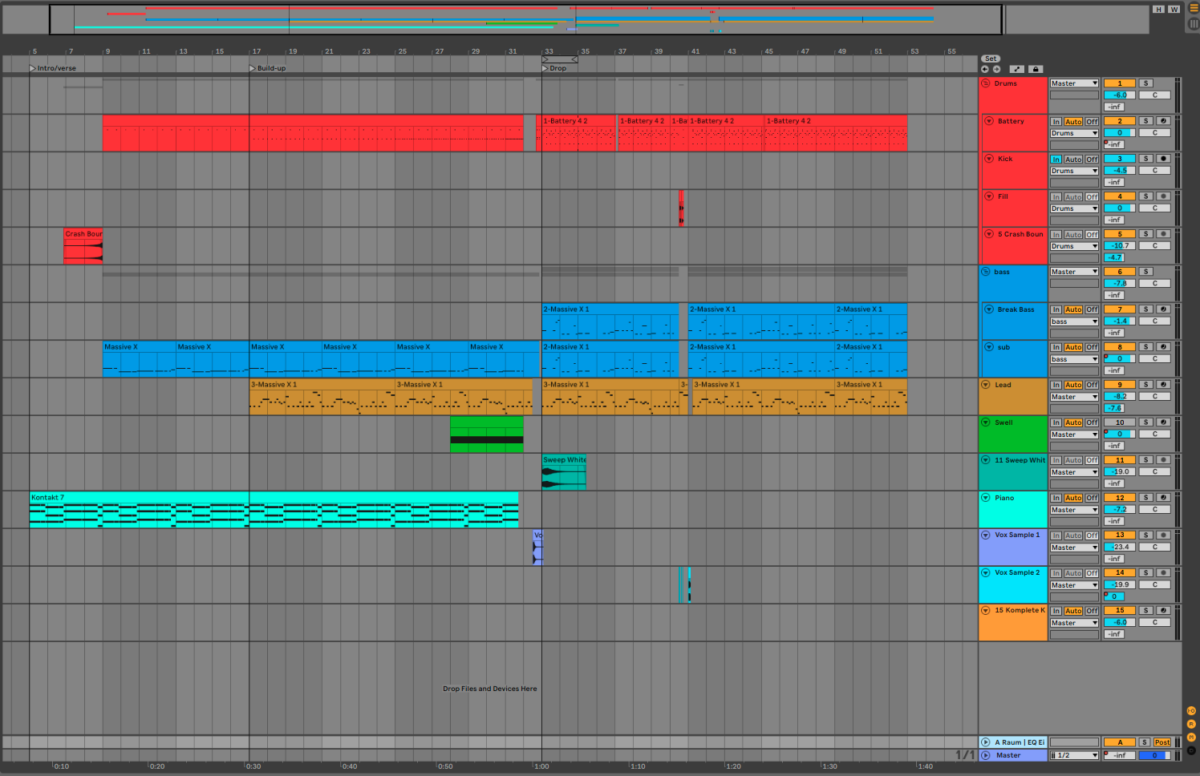
7. Master your composition
Mastering is what will take your track over the line and get it ready for distribution onto digital platforms. Mastering involves compression, EQing, limiting, and a few other processes.
For industry-standard mastering at the click of a button, we’re going to use Ozone’s “Learn” function. This will analyze your track and master it for you in seconds. Any suggestions it makes are tweakable, so if you know what you’re doing you can take a look under the hood and adjust any parameters yourself.
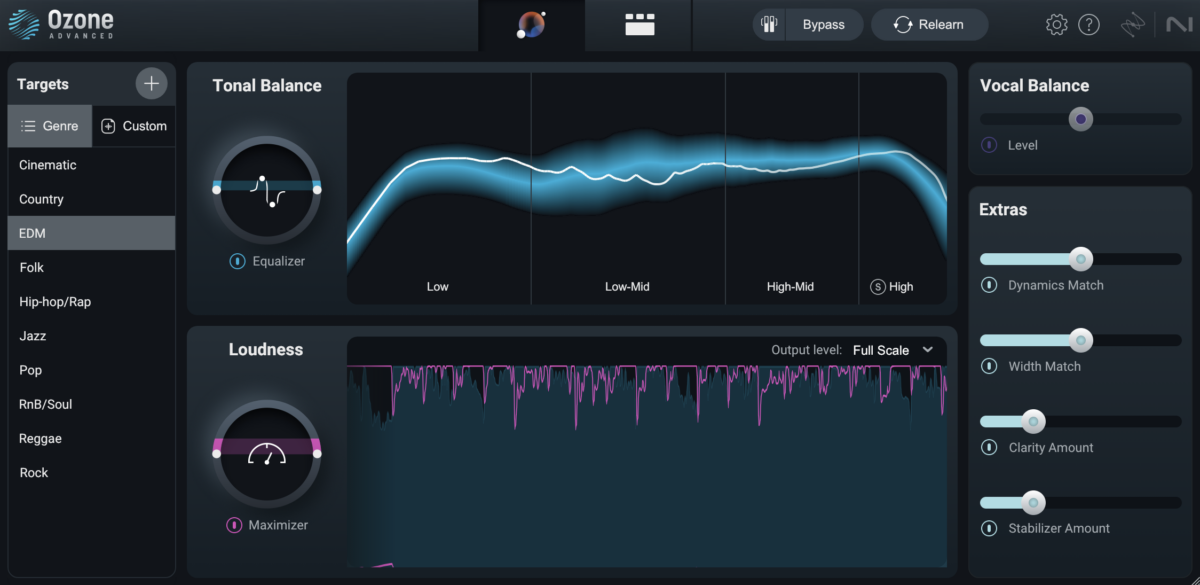
We’re happy with what it has suggested for this track. Let’s take a listen to our fully mastered future house track.
Start making future house music
Everything above is for demonstration purposes, which is why we have such a short track on our hands. But with all of those basics in mind, feel free to experiment and create unique variations of this future house track that repeat certain sections and chop up others.
Once you’ve gotten that down, you can make original future house tracks from scratch using all the techniques we discussed here. Get creative and use the tools at your disposal in Komplete 14 to make the next future house banger.
The post How to make future house music with cutting-edge production techniques first appeared on Native Instruments Blog.
[ad_2]
Source link
Understanding time signatures in music
[ad_1]
How to use time signatures in a DAW
For most of us working in music nowadays, using a digital audio workstation (DAW) is quintessential to our process. Time signatures help us organize the content on our timeline and make edits much more easily. We can also use time signatures at times to create space between sections by adding additional beats to the end or beginning of a section.
Most DAWs have a dedicated feature or setting where you can specify the time signature for your project. This setting allows you to choose the number of beats per measure and the note value that represents one beat (e.g., 4/4, 3/4, 6/8, etc.).
Sometimes slowing the tempo down to create a transition can be a good approach, but sometimes just adding a couple of additional beats (for example, a 3/4 measure after the last measure of a phrase that is in 4/4) can be a way to “stretch time” while maintaining the same click track-tempo in the session. This comes in handy when working with collaborators who might be working on a different DAW or if we just want to export a quick mix bounce and tell them the bpm of the session so they can have their own click track without worrying about tempo changes or midi maps.
In the context of a DAW, the “piano roll” is our playground to play with time and how notes fall in place. We can create a note or rhythm pattern, copy it, paste it, duplicate it, transpose it, expand it in time, and create all sorts of combinations stemming from an initial musical cell.
Having a clear understanding of the time signature we have chosen can facilitate the compositional process as well as speed up our editing when working with both MIDI and audio. When we take into consideration the time signature and how our musical ideas are reflected in relationship to the musical grid, we are fully in control of time and how it all gets contextualized.
[ad_2]
Source link









